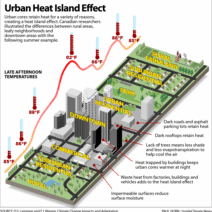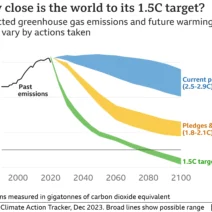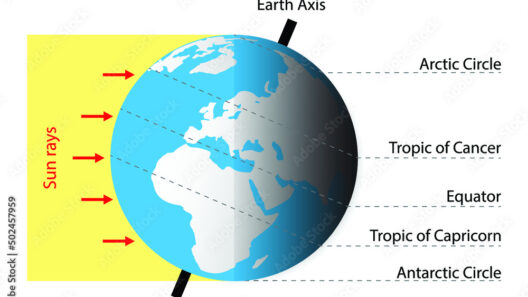Utah, a state synonymous with breathtaking landscapes and diverse topography, exhibits a climatic tapestry that intrigues both residents and visitors alike. This region is a unique amalgamation of deserts, mountains, and snowstorms, each element contributing to an intricate ecological balance that deserves careful examination. Understanding Utah’s climate is not merely a geographical endeavor; it is a key to comprehending the interactions between the natural world and the burgeoning challenges of climate change.
To begin, one must appreciate Utah’s topographical dichotomy. The state is characterized by an extensive array of ecosystems, ranging from the arid deserts of the south to the majestic mountain ranges in the north. The Great Basin Desert, occupying the western region, is marked by its stark landscapes and extreme temperature variations. Here, the aridity shapes the flora and fauna, as well as the climate. The harsh conditions dictate that only the most resilient species can thrive, exemplifying the power of adaptation. Cacti, sagebrush, and hardy shrubs dominate the scenery, resisting the relentless sun while offering a glimpse into the resilience of nature.
As one travels northward, the environmental narrative transitions dramatically. The Wasatch Range, home to some of Utah’s highest peaks, provides a striking contrast to the desert valleys below. These majestic mountains, towering after every twist of the road, are not only a visual feast but also play a pivotal role in influencing regional weather patterns. Their elevation introduces orographic lift, a phenomenon whereby moisture-laden winds are forced upwards, cooling and condensing to form clouds. This mechanism often leads to increased precipitation, transforming the landscape into a lush oasis amid the arid backdrop. The interplay between elevation and precipitation is a quintessential feature of Utah’s climate, creating pockets of biodiversity in otherwise barren areas.
Yet, the climatic extremes do not end with the mountain ranges. Utah experiences a phenomenon that captivates and challenges its inhabitants: snowstorms. These meteorological events can be both majestic and perilous, blanketing the landscapes in pristine white. The winter months summon intense storms that can bring several feet of snow in a matter of hours, particularly in the mountainous regions. Ski resorts, drawing tourists from far and wide, revel in this bounty, bolstering the economy and providing a playground for winter sports enthusiasts. However, such meteorological extremes also underscore the delicate balance within this ecosystem. The frequency and intensity of snowstorms can be influenced by overarching climate patterns, making long-term climate monitoring essential.
Moreover, understanding the implications of climate change in Utah requires delving deeper into snow patterns. Historically, winter months have displayed a consistent accumulation of snow, an essential component in maintaining the state’s water supply. As temperatures rise, however, predictions indicate a shift towards less snow and more rain, which could undermine the delicate equilibrium of water resources. Mountains that were once reliable stores of snowpack may encounter a future where rainfall replaces snow, resulting in rapid runoff and diminished water reserves during warmer months. This transformation poses a threat not only to local ecosystems but also to agricultural practices reliant on predictable irrigation.
Climate shifts also unveil a new narrative for Utah’s deserts. Increased temperatures and prolonged dry spells can exacerbate drought conditions, affecting both human and wildlife populations. These challenges delineate a stark contrast between the natural resilience of desert ecosystems and the emerging vulnerabilities driven by climate change. The potential for desertification, habitat loss, and food insecurity looms large, necessitating a communal response to mitigate further degradation.
As such, Utah’s landscapes serve as a microcosm of the broader discourse surrounding climate change. The convergence of deserts, mountains, and snowstorms tells a story of adaptation, resilience, and fragility. Climate change reshapes this narrative — the impact is multifaceted, intertwining ecological, social, and economic threads into the very fabric of life in Utah.
The urgency of adopting sustainable practices becomes paramount. Emphasizing renewable energy sources, promoting conservation efforts, and fostering community awareness about environmental stewardship can collectively chart a course towards resilience. Utah, with its unique climatic challenges, has the opportunity to lead by example, showcasing innovations in sustainable water management, energy production, and land use practices. By committing to a sustainable future, the state not only safeguards its natural wonders but also affirms its obligation to future generations.
In conclusion, the climatic saga of Utah—rooted in the interplay of deserts, mountains, and snowstorms—encompasses more than just environmental phenomena. It is a story that demands attention and action. By unpacking the complexities of Utah’s climate, we unveil the intricate relationships binding ecosystems to economic vitality. The desert’s stark beauty, the mountains’ serene majesty, and the unpredictable nature of snowstorms invite us to cultivate a deeper appreciation and a more profound sense of responsibility towards the environment. Embracing this journey is not merely a scientific endeavor; it is an urgent moral imperative. The time to foster curiosity and instigate change is now, as the future of Utah’s climate hinges on our collective resolve.





